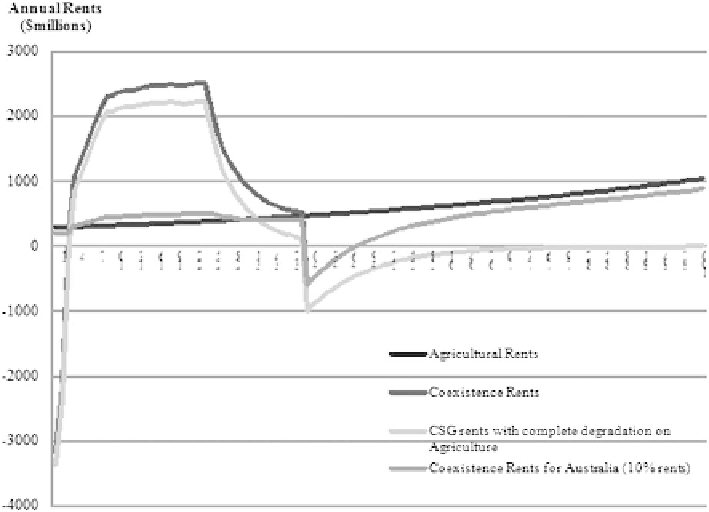Environmental Engineering Reference
In-Depth Information
A benefit cost analysis (BCA) framework was used to assess the absolute
and relative economic net benefits of CSG and agriculture. This involved
computing and monetising the relevant benefits and costs to calculate the
net present value (NPV), per hectare and for the whole project area, gen-
erated by CSG mining alone, agriculture alone, or both co-existing on the
same piece of land. The time-paths of annual net benefits from CSG and
agriculture differ quite sharply (see Figure 5). Agriculture, being already
well established, delivers positive net benefits from the outset and benefits
are expected to increase gradually in real terms over time.
69
CSG has high
up-front costs, a period of high and fairly steady net benefits lasting
around 30 years, and a stream of continuing environmental costs after the
gas is gone. The level of these continuing costs depends on the com-
pleteness and effectiveness of decommissioning the wells and removing
the infrastructure. Under these circumstances, the 30- to 50-year time
horizons customarily used in BCA would capture the full economic
benefits of CSG development while ignoring the continuing environ-
mental damage after the gas is exhausted and thus distort the results in
favour of CSG. The process of re-equilibrating the interconnected ground-
and surface-water systems could well take several hundred years. Because
little confidence could be placed in estimates of key variables so far into
the future, NPVs were calculated over a 100-year time horizon.
Figure 5 Time Path of Annual Rents.
1

